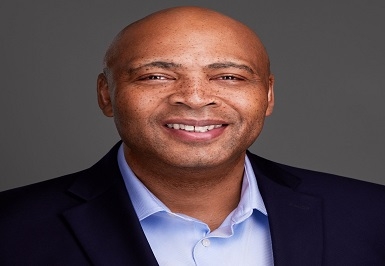Military Transition A Game of Strategy
 Joseph Smiley
Joseph SmileyFor transitioning service members, you can think of LinkedIn as a game of chess. In this game, you have to think for yourself, layout your plan, visualize the steps to achieve your goals, and develop a strategy that ultimately leads to a successful transition in to whatever objective you have identified. Starting early will allow you to properly layout your plan before you. With that, you can visualize each of the steps that you must take in order to move on to the next milestone. Here you will make all the necessary tweaks and adjustments that you need to before moving on. Once you are satisfied with your conceived plan, it’s time to develop the strategy, the roadmap to get to your final objective and execute your first move to get the opponents king in checkmate.
Why did I call this a game? Because you have opponents out there playing against you. Do you think you are the only person going through transition? Looking for employment? If you are, then you haven’t been very observant to everything around you, especially in 2020. There are hundreds of thousands of unemployed Americans competing for work. All the men and women departing from military service will most likely be competing for work. These same people are your competition, playing the same game you are, hoping to come out on top with the victory. You have to play the game smarter and better than everyone else if you want to be victorious.
I am no expert when it comes to military transition or getting a job or writing a resume. Who I am is someone that followed some easy steps, took advice from others, utilized what was available to me, and applied it to my own transition. Though my transition will look different than yours, because I believe no two people have the same experiences, it can be as close as close can be (I just like the way that sounds)! Over the next few paragraphs, I am going to provide you with an outline that you may or may not choose to follow, along with resources that are worth tapping in to.
1. You need to begin early. Most “experts” would say 18-24 months out from your transition point. This is actually a pretty good timeline to follow, but can also become unrealistic, depending on your current status. However, I highly recommend starting no later than 12-18 months out. Anything less than a year and you may find yourself playing catch up, and the competition already has a big lead and are going full steam with no signs of letting up. Take advantage of your branch specific transition assistance program, enroll during that 12-18 month window, because it may get dragged out over several months, which is better than cramming it all in at once.
2a. Create a well-developed and professional LinkedIn profile. You may need to get some help with this, as you want your professional summary to reflect what you have done and are currently doing, but you will want to convert your military jargon in to the language of corporate America, if that is the route you are taking. Make sure you have a professional looking picture. They say that a first impression is a lasting impression. Don’t let your picture dictate a negative impression. Ask yourself this question: Would I show up to an interview looking the way I do in my profile picture? Have an appealing and appropriate background picture on your profile as well, not just the default LinkedIn one that comes with your account. Let that picture say something about you, what you do, or what you are inspiring to do.
2b. Take advantage of the free upgrade to a premium account available for military members. You can access this unique benefit available to transitioning military members and veterans . There are so many more tools for you to use at this website, so please take full advantage of what LinkedIn offers you…for FREE! And to add on to this, Michael Quinn, in conjunction with the USO, conducts regular webinars to train you to master LinkedIn. I highly recommend following/connecting with him so that you can benefit from his knowledge and tips to become successful on LinkedIn and beyond.
3. Have a professional resume written for you from one of many veteran service organizations (VSOs) out there that specialize in this. I will recommend two of them to you here: Hire Heroes USA and Still Serving Veterans . Both VSOs will provide you with an excellent, well-written, professional resume for you to build upon. But they don’t just stop there! They both offer other means of assistance to veterans. It is well worth your time to check them both out and use the services they provide.
4. Networking is going to be extremely vital to your success on LinkedIn. Now, this can be a touchy subject for some people. There are those that say that quantity trumps quality, but I lean more towards quality than quantity. You want to connect with others that you can benefit from. For example, find those within the industry you want to work, the company you are targeting, and connect. But don’t just hit connect and leave it at that. Send them a note about why you want to join THEIR network. Doing this will help you connect with genuine people that will be more likely to accept your request and to engage with you in conversation. Build your network around what benefits you and those you connect with. It’s a two-way street. When you establish that connection, you become a part of their network, and they become a part of yours. Quality connections are meaningful. You can build up quantity with all quality connections, so forget the idea of connecting with as many people as you can.
5. Make sure you are engaged. You can do this by posting content for your network to see that is useful and serves to benefit others. Also, comment on the posts of others. It’s okay if you disagree, and you can do so, but be respectful when doing it. LinkedIn is a professional network, so save the drama and other stuff for social networking platforms like Facebook and so forth. When you are engaged, you will be engaged by others. This will get you noticed. If you are sharing meaningful content, you will start seeing an increase in the amount of views you receive and connection requests you will have. Your network will grow because others want to benefit from what you share. Again, be mindful of the connection requests you accept. Believe it or not, you will get spammed or contacted about buying this or that, investing, etc. That may be something you want, but it’s not going to benefit you here.
6. Consistency is another key to success. Take the time to be a regular user of LinkedIn, to include posting content, engaging others on what they have posted, use the resources from LinkedIn Learning, and so forth. The more you participate, the more you engage others, the more you will be engaged and noticed, especially by recruiters and talent acquisition teams. You don’t have to spend hours upon hours on the site, but a few minutes or so a day can make a huge difference for you and others. Your consistency of sharing content may just be the spark for someone else to do the same. Many sparks can create a huge fire, and we want a large bon fire burning hot and bright within our veteran community.
Lastly, I said I would provide some resources to tap in to, so here they are:
VETS2INDUSTRY
HIREMILITARY
Veterans ASCEND
Hiring Our Heroes
Veterati
USO Transitions
Fourblock
Onward To Opportunity (O2O)
Institute for Veterans and Military Families (IVMF) – Syracuse University
American Corporate Partners (ACP)
And there are so many more! I could have told you about each one of these services, but I want you to take the time to look in to them yourself, to become familiar with what they offer and how they support the military and veteran communities. Each of these organizations have great people, a majority of them being veterans themselves, to connect with. You need to do the work to find them, connect with them, engage them, and benefit from what they offer.
So, back to the game of Chess. As you begin your transition, it’s a lot like moving that first pawn forward on the board in order to get your opponent to react. From there, you have to visualize your next move as well as that of your opponent in return. Do I jump my knight out early, or hold it back in reserve? Do I let loose the wrath of the queen to wreak havoc on my opponent, or would that be foolish? Do I use my bishops and rooks to protect my king? Ultimately, you want to get checkmate on your opponent before they get it on you. Chess is a game of strategy, just like your transition. Play it smart and you can win.
If there is one thing that I want you to take away from this article, it is this: YOU ARE NOT ALONE! The veteran community is very engaged on LinkedIn and we are here to assist each other. The comradery amongst our community is amazing. We are a community with backgrounds that span all branches of service and multiple decades. IGY6!



